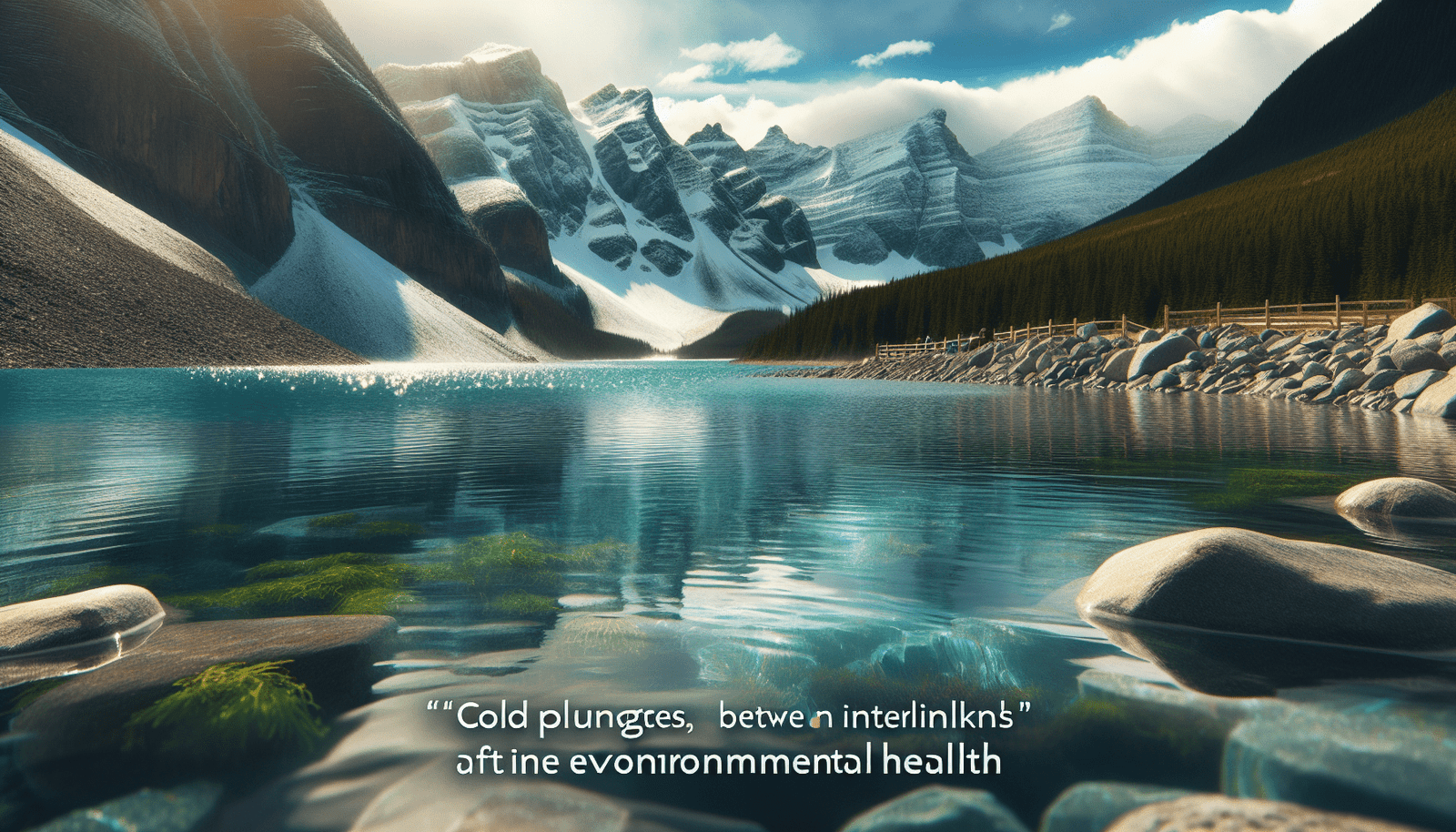Welcome to an article that explores the intriguing connection between cold plunges and environmental health. If you’ve ever been curious about how immersing yourself in frigid water can have a positive impact not only on your well-being but also on the environment, then this is the perfect read for you. Discover the surprising benefits of cold plunges and their potential to promote a healthier planet. Let’s dive in together and uncover the fascinating link between these invigorating experiences and sustainable living practices.
The Connection Between Cold Plunges And Environmental Health
Have you ever wondered about the impact of cold plunges on your body and the environment? In this article, we will explore the connection between cold plunges and environmental health. Let’s dive in!
Benefits of Cold Plunges
Cold plunges, often incorporated into wellness routines, have been gaining popularity due to their numerous health benefits. When you submerge your body into cold water, several physiological responses occur that can positively impact your overall well-being. Cold plunges have been shown to reduce inflammation, improve circulation, boost the immune system, and increase energy levels.
Environmental Impact of Cold Plunges
While the benefits of cold plunges are well-documented, it’s essential to consider the environmental impact of this practice. The water temperature, the source of water, and the disposal method of the water after the plunge can all have significant environmental implications.
Let’s delve into the environmental considerations of cold plunges and how you can make more sustainable choices.
Water Temperature: Finding the Right Balance
The temperature of the water used for cold plunges is crucial for both your experience and the environment. While plunging into extremely cold water can provide some benefits, it can also be harmful to aquatic life and water resources. Striking a balance between a refreshing cold plunge and environmental conservation is key.
Consider using water that is cool but not freezing. This way, you can still experience the invigorating effects of the cold plunge without causing undue stress to the ecosystem. Additionally, monitoring the temperature of the water regularly can help ensure that it stays within a sustainable range for both you and the environment.
Source of Water: Choosing Wisely
The source of water for your cold plunge can also have environmental ramifications. Opting for natural bodies of water, such as oceans, lakes, or rivers, can be a more sustainable choice compared to using large amounts of treated water from municipal supplies. Natural bodies of water already support aquatic life and ecosystems, making them a more environmentally friendly option for cold plunges.
If using a natural body of water is not feasible, you can explore alternatives like rainwater harvesting or utilizing water from sustainable sources such as wells. By being mindful of where your cold plunge water comes from, you can reduce the environmental impact of your practice.

Disposal Method: Proper Water Management
After your cold plunge session, it’s crucial to consider how you dispose of the water. Simply draining the water into storm drains or natural water bodies can introduce pollutants and disrupt local ecosystems. Implementing proper water management practices is essential for maintaining the environmental integrity of your surroundings.
One option is to collect the cold plunge water and reuse it for purposes such as watering plants or flushing toilets. This way, you can minimize water wastage and give the water a secondary purpose before it returns to the environment. If reuse is not feasible, consider finding a responsible way to dispose of the water, such as using it to nourish plants in a designated area or connecting with local water treatment facilities for proper disposal.
Sustainable Practices for Cold Plunges
By incorporating sustainable practices into your cold plunge routine, you can maximize the benefits for both yourself and the environment. Here are some tips for making your cold plunges more environmentally friendly:
- Use a timer: Limit the duration of your cold plunge to conserve water and energy.
- Opt for natural water sources: Choose natural bodies of water whenever possible to reduce the need for additional water resources.
- Recycle or reuse the water: Find creative ways to repurpose the cold plunge water before disposing of it responsibly.
- Monitor water temperature: Keep an eye on the temperature of the water to ensure it remains within a sustainable range.
- Educate others: Share your knowledge about sustainable cold plunges with friends and family to promote environmental awareness.
By implementing these sustainable practices, you can enjoy the benefits of cold plunges while minimizing your impact on the environment.
Conclusion
In conclusion, the connection between cold plunges and environmental health is multifaceted. While cold plunges offer various health benefits, it’s essential to consider the environmental implications of this practice. By being mindful of the water temperature, source of water, and disposal method, you can make your cold plunges more sustainable and eco-friendly. Remember that small changes in your routine can have a significant positive impact on both your well-being and the environment. So, the next time you prepare for a cold plunge, think about how you can make a difference for yourself and the planet.


